The role of corporate and media as partners
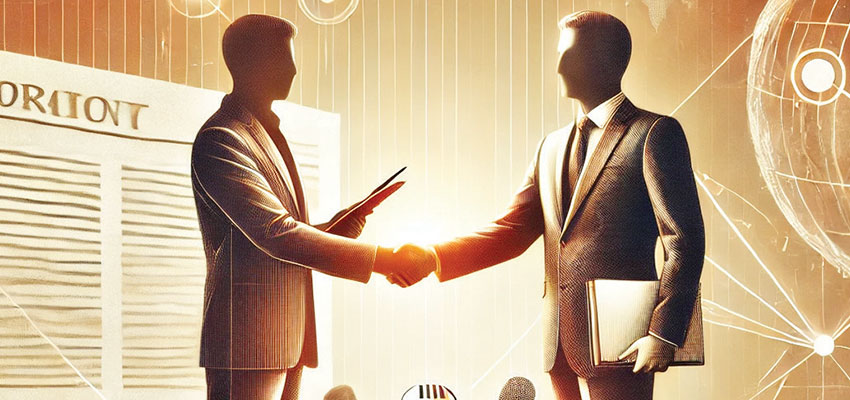
Founder and CEO of Kinetic Green Energy and Power Solutions Ltd, Sulajja Firodia Motwani’s bold vision of delivering green mobility to the masses, has made Kinetic Green a leader in the market of electric threewheelers and two-wheelers. In her talk as the guest of honour, at the recently held 10th anniversary celebrations of Corporate Citizen magazine, she stressed on how corporate and media are interdependent on each other and why corporates and media need to work together to bring a change in the society and ensure all round development of the country. Corporate Citizen brings to you excerpts of this talk
THE MEDIA DIALOGUES : PART-1
Corporate-Media have an interdependent relationship
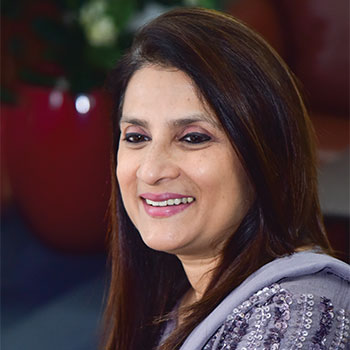
We all know that the relationship between corporates and the media is intertwinedthere is inter-dependence. On one hand, media depends on the corporates for advertisement revenues, as they have to run the magazine or a newspaper. They need the funds, which typically come from advertisements from corporates. On the other hand, corporates need media to communicate to their stakeholders, about their initiatives, their efforts, their products, and to manage their reputation within the broader society and other stakeholders.
In a way, Corporate-Media is an inter-dependent relationship, which can get even more complicated as there could be corporates that now own media houses. This could bring in an additional bias, bringing in some of the political or religious factors and other biases in play. So, the question is-how do we ensure that this relationship, which is so interdependent, is kept impartial? Because, finally the media is the champion in creating an image and opinion of many things in society, including that of corporates. And, we would always hope that media remains impartial—it is important for the healthy development of the society. So, here I do believe that there is an individual and a collective effort. The collective is nothing but a collection of individuals.
While there are certain factors, issues, people or situations, which can lead to impartiality; I do believe that there are shining examples of individuals who are leading a very honourable life, and are a great examples for all of us. We have examples of dynamic, independent, impartial and passionate journalists who are exemplar for the good of society and our future generations.
"Together as media and corporates, we have to build this hope to embrace the good and green future that I genuinely believe lies ahead of us"
-Sulajja Firodia Motwani
Truth will prevail
There are good corporate citizens and good media houses, and we all have to hope that these individuals come together and keep the conscience of society at their heart and create a better example and future for all of us. I do also believe that in the long run, truth will always prevail. While there could be periods where biases and factors impact what people are reading or what’s put out, I do believe that you can fool some people sometimes, but you can’t fool all the people all the time. We may go through periods of uncertainty but through shining examples of individuals that are our role models and by vigilance of our people who are reading and consuming this media and its messages, together as a collective conscience, truth will prevail in the long run and that’s what we have to hope.
Win-win for Corporate and Media
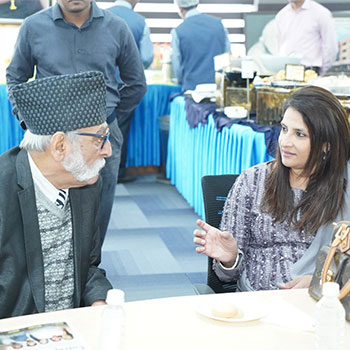
Corporates also have a big role in maintaining relationships with media, based on honesty and respect. Some corporates do see media as adversaries. Some of them see the media as pawns, which is very unhealthy. If more corporates look at the media with respect, honesty and integrity, then I think it’s a win-win for them, in the long run. And, it again comes back to—you can fool people sometime but not all people all the time. The same is true for the corporates. In the long run, what will prevail is credibility, honesty and integrity.
It’s very important for corporates as well, to keep credibility and integrity at heart, to build a long-term reputation. I also feel that when we are dealing with media as corporates, we have to deal with them as people, because finally it’s all about people and relationships. If your relationship with the journalists, whether it is a junior journalist or a very senior editor, you should deal with them as people, friends and responsible stakeholders and build a long-term relationship, which is again built on credibility, honesty, consistency and maturity. And, they will respond in the same way—you reap what you sow.
Excellence, honesty and human relations
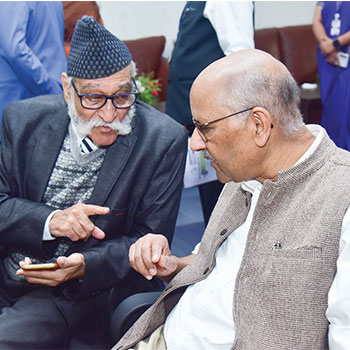
At least in my journey, I have been blessed with three principles laid by my grandfather for us, which in Marathi language are called Kasoti, Sachoti and Hathoti (evaluation of human relations, honesty and excellence). So, even the way we deal with media as a key stakeholder, it should be built on these principles, that you should be honest, build good human relationships and not opportunistic commercial relationships—and I think it has always worked. I have received a lot of love, support and respect from the media community, in our good times of course, but also during difficult times. Because, I think it’s been about building long term relationships.
"If more corporates look at the media with respect, honesty and integrity, then I think it’s a winwin for them, in the long run"
Media-Corporate coexist
I do believe that together as corporates and media, we have a greater role to play right now. India is on a cusp of the next leap and I do believe very honestly and sincerely in the vision of Viksit Bharat—we are poised to be a superpower in the coming decade. We are also slated to be the world’s third largest economy. As corporate and media together, we must communicate, educate and inspire our society for achieving this goal.
Embracing new technology
There are many new things that are happening in the world of technology. We heard some discussions about how artificial intelligence (AI) and electric vehicles are changing the world. Electric Vehicle (EV) is a new technology coming in the automotive world, can revolutionise transport, reduce pollution, make transport easier to use, and save a lot of money for our citizens.
But, there is a need to educate people, and media has a big role to play in this, because people don’t believe in advertising but they believe in news articles. So, if media would look at the advantages of these green technologies and electric vehicles, participate in understanding the aspects of artificial intelligence in future electric vehicle and its importance, and bring them to people in the form of education, I think it will alleviate our society’s ability to embrace these new technologies and to stay ahead of other countries.
THE MEDIA DIALOGUES: PART-2
Emotion is more important than Intelligence
A psychiatrist by profession and actor by vocation, Dr. Mohan Agashe, is renowned for his versatile performances in both mainstream and parallel cinemas. He started his career in acting by working in the theatre and as an actor his creative side is enriched with sterling performances, along with directing and producing. Agashe has served as Director of the Film and Television Institute of India at Pune. Winner of numerous national and international awards and accolades, both as actor and medical doctor, he was conferred ‘Padma Shri’ by President of India in 1990 and Sangeet Natak Academy Award in 1996. His notable performances include roles in regional Marathi and Hindi films like Ghashiram Kotwal, Devrai, Valu, Sinhasan, Saamna, Aakrosh, Gandhi, Asthu and many more. Agashe is also a recognized psychiatrist, who studied in B. J. Medical College, Pune for his MBBS and MD degree in Psychiatry, and worked in the fields of clinical psychology and psychopharmacology. At the recently held Corporate Citizen 10th Anniversary function, at Sri Balaji University, Pune (SBUP) campus, Dr Mohan Agahse was invited for an interactive fireside chat, moderated by Vinita Deshmukh, Editor, Corporate Citizen. In this insightful discussion he dives deep into the topics of mind, media, acting, mental wellness and more
Vinita Deshmukh: Your creative side is enriched with sterling performances, including directing and producing. How do you cope in today’s world where precision and systematics are the key words?
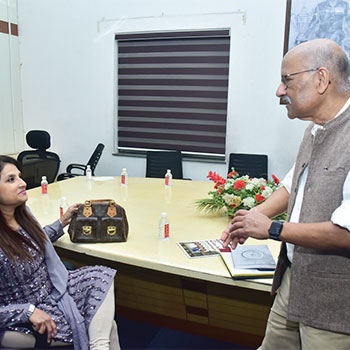
Dr. Mohan Agashe: Media has changed so much over the years. What worries me is, before the advent and phenomenal growth of virtual media, life was not that difficult. A lot of data generated by media and social media today is a waste. The phenomenal growth of social media has reduced the commonality and increased individuality. Earlier there was a common world for everyone—if there were ten popular books or movies in the market, out of them at least five were read or seen by majority of the people. So, while socialising or speaking in a public space, there was something common to talk about. Now, because of virtual or social media, each individual has his or her own world. We have reduced or limited our life to just a social media platform like Instagram. The next Gen has easily adapted to this virtual world, but for a person like me it is bit difficult, and I am still trying.
Q: Today there is a big buzz around “Mental Wellness” and it has become very fashionable to talk about it openly. As a psychiatrist, what are your thoughts on mental wellness?
There is no mental wellness, there is just wellness—mental is just a part of it. You can’t be mentally well and physically unfit. Nobody visits a counsellor or psychiatrist only with the body; one brings the mind also, as it is part of the body. So, wellness of mind is also far more important.
Intellectually challenged
Our formal education is entirely dependent on our thinking brain. For example, here in India, we are generally taught to read and write three languages. First is the regional language, i.e. Marathi; then comes Hindi, the national language, and then English as a practical language. So, from the playschool till you go to college, for around 14- 15 years, besides studying other subjects, you have to learn to read and write these three languages. And those, who can’t do that, have been beautifully termed as ‘Intellectually challenged’.
Now I am making a very dangerous but true statement. Those who coined this term ‘Intellectually Challenged’, started formal schools for developing only cognitive ability, which is the left side of the brain. Science tells us that right brain is about emotions and sensitivity, and left brain is about intelligence and thoughts. So, to all those intelligent people, it took 100 years for them to realise that there is something called as ‘emotionally challenged’. They first found out Intelligence Quotient (IQ), and it took another century to find out Emotional Quotient (EQ).
We only think of wellness and don’t practice
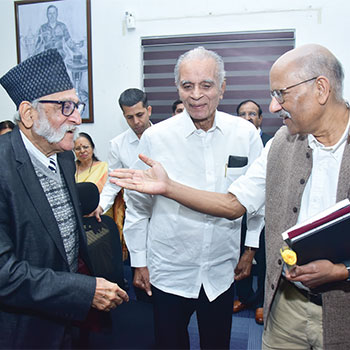
We are taught to read and write, but unfortunately, we are never taught how to see, what to see, how to listen. We still continue that passively, because we have eyes and passive seeing is possible. But, if you learn active seeing, then you will learn exactly what to see in a painting. Otherwise, you don’t even know what to see, even when you are able to see. So, today we are cognitively developed and sensorily underdeveloped—there has to be a balance.
In life, emotion is far more important than intelligence. We all like to be loved. Now love, happiness, sadness, all these are in the emotional domain. Motivation is in the emotional domain. But, we never pay any attention to our sensitive brain. Today our thinking brain is swollen.
The reason I gave these preambles when you asked about wellness is because, today we only think of wellness and don’t practice wellness. Today, we think of love and don’t practice loving. Sometimes, we practice cheating by verbalising love. For example, in my very young age when I went abroad, I was quite taken aback when I stayed with some families, where the husband was telling his wife many times in a day “Oh darling, I love you so much”. I imagined the same situation happening in my house, back in India. If my father would have told my mother the same phrase, even once every day, first thing she would have done is start suspecting him. Why? Because earlier, we could communicate emotions by our gestures. We communicated our dislikes, likes, happiness, etc. without words—because we were focused on our five senses.
"In life, emotion is far more important than intelligence. We all like to be loved. Now love, happiness, sadness, all these are in the emotional domain. Motivation is in the emotional domain. But, we never pay any attention to our sensitive brain. Today, our thinking brain is swollen"
-Dr. Mohan Agashe
Emotions and Intelligence
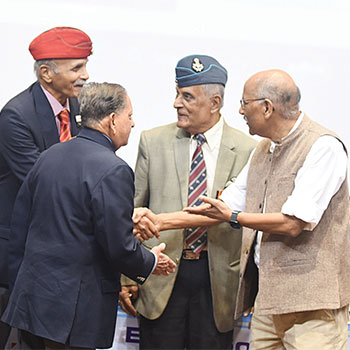
Your brain is like a CPU. So, first, you collect information through five antennas (senses), and then you analyse. Now, when you have to learn reading and writing, the only part of brain you are using is the left one, because you want to communicate thoughts. We have not learned how to communicate emotions, which is so important in life.
So what do we do? We go to watch some stupid cinemas. When we Indians go through intense emotions, we start communicating our emotions through songs of sadness or love. Songs have sound, melody and everything.
Today, the other important thing we do is start using the mobile phone, for which no prior training is given to us on how to use it. Today, every mobile phone comes with an inbuilt camera and from the moment you buy one, you think you have become a photographer. Now, anywhere you go, you pull this mobile phone out and start taking photos. This act indicates that intellectually you are grown, but sensorily you are like a child. There are various ways of communicating. In fact, words have a limited power of communicating. So when we speak to each other, only ten percent gets communicated through words. More than 50 per cent gets communicated through body language, and more than 27 percent through the way you sound. So, it’s a multilevel, multilingual communication, when we were earlier in the oral phase of communication. Then when we migrated to the written phase, and writers replaced orators, so many of sensitive people were left out of that. And, this is very important to understand for the concept of wellness.
Wellness talks of balance between your thinking brain and your feeling brain. We have two eyes, two ears, even our brain has two parts—emotions and intelligence. And, since we are never trained in emotions, today when it comes to wellness, majority of young people have emotional problems, because they have never been taught how emotions come, how they are developed, and how to keep them under control.
Information overload
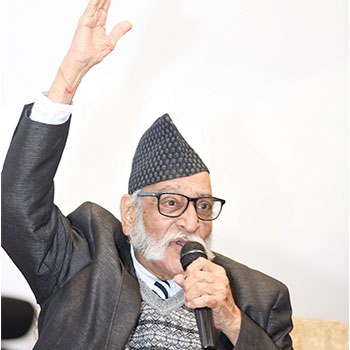
Before this information revolution came in, we all had hardly any source of information. The source of information was our parents, immediate family members. When we grew up, it was friends and teachers. By the time we could read, we had developed the ability to understand what we read. And, then you assessed the information on the basis of your experience.
Even today lot of people don’t understand what they read. If everybody could have understood what they read, there would have been no need for school and colleges. But, because by reading you don’t understand, that’s why you have teachers to teach. After the information revolution, today we have too much information about everything, but without having any experience. So, we only talk of emotions, because we hardly experience them. We think of emotions; we don’t experience them.
A writer has the ability to convert experience into words, so he writes novels. But, filmmaker has the ability to convert words into experience. Film is close-up, both emotionally and intelligently, but unfortunately, the way it is practiced by lot of people—because it has great manipulative power, it went straightway to commercial people and not the intelligent people. When the book was born, it went to intelligent people. And so, we go to cinema like we go to toilet, to get rid of our emotions only. You don’t like a film which makes you think.
Q: Tell us about the films you have acted in, of which many are socially relevant.
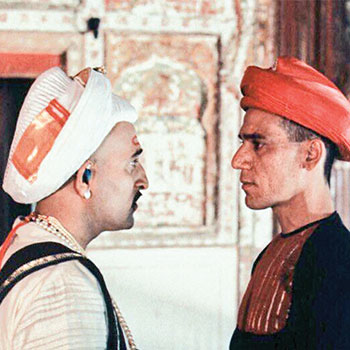
A good film for me is where the film ends and thinking begins. Anything which provokes you to think, is a good film. The films I chose to do, is because I knew this language is a better language than the book. I tried to incorporate scientific information in a storytelling format. So, if you learn the difference between nutritious entertainment and junk entertainment, you’d love my films.
My latest film ‘Outhouse’, is about elderly singles. It is a no non-sense film—about a simple friendship between a puppy and a child, changing lives of two elderly individuals. The whole family can watch it, without anyone being embarrassed at any point. It is about elders having some choice to live the way they want. Sharmila Tagore and I are the co-stars in ‘Outhouse’, but the main hero of the film is a puppy. Everybody wonders, how a puppy could act so well. So, for that, you have to see the film.
With changing demography and aging related problems, caregiving for both-children and old people, has become a big problem. Due to the pressure of looking after the family, our grown up children, have forgotten their childhood, and they have no time to think that they will become old. The young children and the old, get along extremely well. And in fact, this must be your experience also, that the grandparents are very good to their grandchildren, but not to their own children. Because, children are for disciplining, and grandchildren are for realising failure of disciplining.
Another movie called ‘Kaasav’, in Marathi language, is a wonderful film on youth and their problems. It was directed by filmmaker duo Late Sumitra Bhave–Sunil Sukthankar and produced by me, in association with Bhave–Sukthankar's production company "Vichitra Nirmiti". At the 64th National Film Awards, ‘Kaasav’ won the prestigious President Golden Lotus National Award. The most common problems of youth today are depression and high rate of suicide, and Kaasav sensitively deals with this subject.
"The young children and the old, get along extremely well. And in fact, this must be your experience also, that the grandparents are very good to their grandchildren, but not to their own children. Because, children are for disciplining, and grandchildren are for realising failure of disciplining"
Q: You are known for your iconic role as Nana Phadnavis in the Marathi play ‘Ghashiram Kotwal’. How’s Ghashiram Kotwal relevant in context of today’s world.
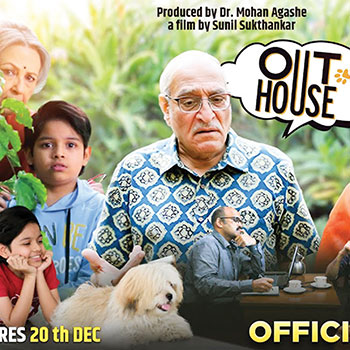
In 1972, when the play was staged in Pune, there was a great controversy, because it was anti-Brahmin, anti-Nana Phadnavis. But, when we further went away from Pune, people did not see Nana as Nana, as this is not a historical play. In fact, as time passed by, a lot of people thought that this play is about Indira Gandhi and Bhindrawale, and how persons in power create monsters out of a common man, for their own benefit. And when, the job is over, they get rid of them. Ten years ago when I went to America, we had done three shows in Maryland. Some of the American viewers came to me and said, “Please bring your play again. It’s a play of Bin Laden and George Bush.” But, the story of birth of Ghashiram Kotwal was birth of political parties Shiv Sena and Congress—that is what Vijay Tendulkar writes in his play. So this has been happening from time immemorial. So today, it has become a phrase—when Lalit Modi was removed from BCCI, the newspaper title went “Lalit Ghashiram Modi”. So people say this in the context that he was used and then got rid of. Though the play is in Marathi, we have done 61 performances abroad, with the presentation, which was visual and auditory. So there was no problem in understanding, because if you say these two lines “Power corrupts” and “Absolute power corrupts absolutely”, everybody understands the play.
Q: You have done a brilliant experiment called ‘Grips Experimental Theatre’, wherein against the conventional children stories which are about fairy tales, you brought in harsh realistic topics like the parents-children relationship. What was the main theme of Grips Theatre, which is still going on?
Grips was a revolution at the time when it started, because it drifted from the conventional concept of theatres for children. Grips sent on leave all the fairy tales, the demons, and brought the realistic problems of children forefront. I started it because I thought that today’s parents don’t have as much time for their children as my parents had. Though this is where I learned the word “Smuggling of Education,” the play was a great fun. It was anti-thesis of a classroom, though the subject was serious. And, the young adults played children. From both sides, the real and realistic, it made a strong impact on me because I could see how through fun, humor, music, you can make people think—not only adults, but children also. So, when that was successful there, I practiced it in cinema.
Q: Some tips and some anecdotes and fun, to live a fun-filled life?
I don’t give any advice, because I am convinced that nobody can teach nobody else. If anybody wants to learn, he is free to learn. But, by teaching if you think somebody has learned, you are under a big mistake. What we have forgotten, all of us, is that we are a part of nature. So, we are not at the centre, we are trying to keep ourselves at centre and draw a world around us, instead of finding where in the nature we are. It is far important to know that we are part of nature, and don’t fight the nature, but agree with the nature. So, negotiate with the nature but don’t call nature as an enemy. If you call nature as your enemy, be hundred per cent sure that nature will defeat you. You will not be able to defeat nature.
THE MEDIA DIALOGUES: PART-3
The changing and challenging landscape of INDIAN MEDIA
The principle of all contemporary history is that anything that's happening today didn't start today—anything that's happening today started much earlier, believes Shekhar Gupta, an award-winning journalist, and founder and Editor-inChief, ThePrint. In his keynote speech as the chief guest at the recently held 10th anniversary celebrations of Corporate Citizen, he spoke on The Changing and Challenging Landscape of Indian Media. In his keen analysis of the evolving media landscape, he gave a glimpse about the challenges, transformations, and the future of the media in India. Here are the excerpts from his captivating talk
The principle of all contemporary history is that anything happening today didn't start today—anything that's happening today started much earlier. I tell people that something like Cut the Clutter works, because there is a whole generation that still doesn't believe that there was history before Google. So, there is a whole postGoogle generation that needs to understand that everything happening today is rooted in something from the past. If I were to start the story of what has happened in the media landscape from 2014 to 2024, I might need to start with 2009, because that is around the time when foundations were laid.
What is journalism, and what is news media?
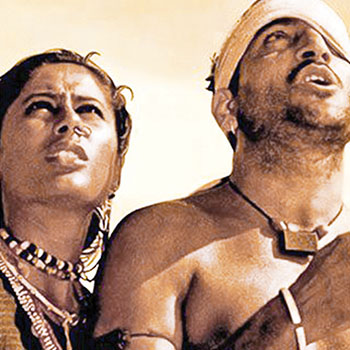
News media is all about public opinion. In India, there are no laws or constitutional provisions to guarantee journalists' freedoms. It's all under Article 19(1)(a), which gives journalists the same freedoms as any Indian citizen.
There is no law in India and there is no constitutional principle that gives journalists any special privilege or freedom. For instance, if you watch US Congressional hearings on YouTube, about the protection of sources for journalists, even with the First Amendment, they are now debating new laws that they have passed by voice vote in the House. It will go to the Senate, giving much more protection for source protection.
But in India, there is no source protection. Some of the most difficult legal cases I have faced are the ones in which there was a demand to reveal sources. And, any time we went to our go-to lawyer, Fali Sam Nariman, he would say that without any source protection, if the court insists on revealing sources, particularly in criminal cases, either you will give it or you submit yourself to punishment, because there's no protection. So, how does it work then if there is no legal protection?
"Today, the perception of media has drastically changed. What is happening on TV these days even embarrasses those who might be agreeing with the point of view that there is such bad language used, there is no logic, even if there is no news "
-Shekhar Gupta
The era of media controls
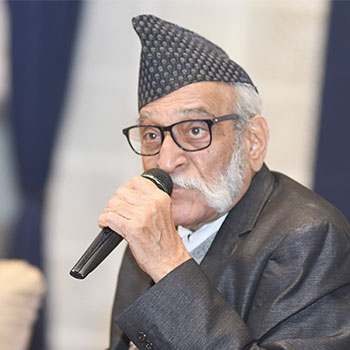
Let me take you back to 1975. I was in my final year of college when our then Prime Minister Indira Gandhi imposed the Emergency. And suddenly, the next day, there was nothing in the newspapers. Some newspapers had blank editorials because censors would not pass their content.
It was so absurd that censors edited even the speech of the then Defence Minister of India, Bansi Lal Legha. And, as a student, I watched in the city of Rohtak—I vividly remember him speaking on Independence Day. He made three remarks: about the media, which the censors approved; about food prices, which were allowed as well, and gave a critical remark that was censored entirely.
So, we got into that era of media controls. It was a terrible time. It was a bit like everything had to be cleared by the government. Everything the government didn't like wouldn't get published. Cartoons started to get stopped. What happened then? It was then people realised how crucial journalism was once it was taken away.
By the time the Emergency ended, a social contract had emerged between the people of India and journalists. This contract became the protector of press freedoms, as there is still no law safeguarding these freedoms.
How did journalists go from hero to zero?
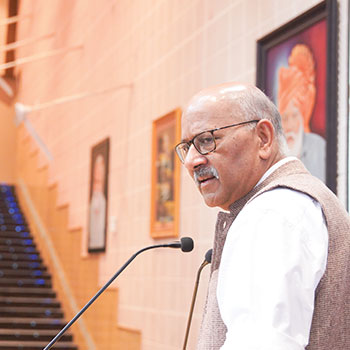
The problem right now is that, if you look at this landscape, it is the social contract that has started to fray. I have reflected on this often and believe it’s something we journalists must talk about. How did we go from hero to zero?
So there are four articles I have written in my National Interest column. One of them was called Mere Paas Media Hai, which was going back to the famous dialogue in the movie Deewar, “Mere Paas Maa Hai”. The second was Views Media, the views as in the news. The third had a more elaborate headline: From Crook, TRP Hunter, Idiot, Clown: How Did the Journalist Go From Hero to Zero?
I start with 2009, because that is when the UPA came back with a bigger majority than before. It caused two things to happen: one in our politics and the second in our ideological debate. In politics, suddenly the BJP realised that the UPA had come back with larger numbers, and they had become stronger. You cannot defeat them through regular methods. So, other methods have to be found. This led to alternative tactics, like the anti-corruption movement spearheaded by Anna Hazare. The campaign was one way to undermine the government and its credibility.
Further, in the ideological debate, Manmohan Singh’s government, the UPA won. Everybody had thought that UPA had come into power, Atal Bihari Vajpayee has been defeated, and this will be a leftist government. However, it turned out to be the opposite. It carried out more reforms, including the privatisation of Delhi and Mumbai airports. Expectation was that they would stop those. This disillusioned the Congress’ left-aligned ideological base, which created an internal pushback.
The Radia tapes incident further deepened distrust in institutions. Niira Radia, former corporate lobbyist, interacted with numerous journalists, but five were caught in varying degrees of indiscretion. This stimulated the narrative that all politicians, judges, media professionals, and corporates were complicit— everyone was a "chor" (thief).
"What is good is good, and what is bad is bad. That’s the reason we call ourselves unhyphenated"
Portrayal of journalists in Bollywood movies

Now I will leapfrog to the more serious things, like the movies on the Indian journalist's take on Indian popular culture. In the 1950s and early 60s, journalists were portrayed as honourable heroes who fought the good fight and often ended up winning the girl. Iconic actors like Dev Anand played these roles, such as in Mr. & Mrs. 55 (1955), where he played a cartoonist struggling to make ends meet. The song Jaane Kahan Mera Jigar Gaya Ji captures the charm of those times, with Johnny Walker’s character who is in his newsroom during lunch hour with the editor’s secretary.
Contrast this with today’s depiction of journalists. Modern films often caricature them as TRP hunters, crooks, or clowns. Some bollywood actors have both repeatedly made fun of journalists. Cinema has often portrayed journalists as upright, witty, and idealistic individuals. Take, for instance, in CID movie, Dev Anand plays a CID officer, investigating the assassination of an upright editor, Mr. Srivastava. The editor, who's fighting with property mafia threats, is murdered but gets justice in the end. The film is remembered for its timeless songs, like Yeh Bombay Meri Jaan and Kahin Pe Nigahen, Kahin Pe Nishana.
Films like Kala Pani and Solva Saal showcased the heroism of reporters. In Kala Pani, Dev Anand’s character seeks justice for his father, who has been given a life sentence and is serving time in Hyderabad. There he goes to a local newspaper to look at its archives. Looking at the archives, he runs into the paper's young, bright reporter, where he meets Madhubala. Similarly, in the Solva Saal, Dev Anand played an out-of-work journalist who meets with a rich man's daughter. This movie was a kind of remake of a hollywood movie Roman Holiday.
Disruption of media’s credibility
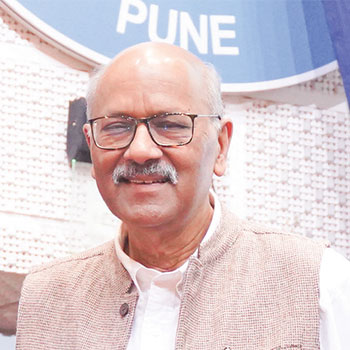
By the early 70s, cinema began subtly altering the journalist archetype. By the 80s, the change became drastic, exemplified in movies like Peepli Live and PK. These films, though critically acclaimed, trivialised TV journalism. Now, all of these examples are not post-2014. All of these examples are pre-2014. In fact, of the four articles I mentioned, three were published pre2014. So, this image was piling up over these years leading up to 2014 that destroyed the credibility of what is known as legacy media.
I think in 2009, big conglomerates, chitfund owners, and real estate magnates began acquiring media houses. I often tell people that these media companies are small parts of larger conglomerates. Think of them as akin to the United States of America, with 50 states representing the different companies in the conglomerate. The media company would be so insignificant that it would not even match Puerto Rico, the Caribbean Islands in size. These conglomerates don’t have to exploit their media arms for profit or to fix things; instead, issues arise from other industries like real estate and mining.
The problem began when people involved in mining and real estate in mineral-rich states like West Bengal, Jharkhand, Chhattisgarh, and Odisha needed protection for their ventures. After securing mineral leases, they used the profits to build real estate, which also required safeguarding—from politicians, police, regulators, and even the media. For just ₹100 crores, one could establish a Hindi news channel and a daily Hindi newspaper.
Some of the largest liquor barons in North India have invested in media that treated it as a tool of influence rather than a profit centre. These owners pay top salaries to editors and journalists. They host lavish conclaves where top officials, politicians, and celebrities attend. The prime minister, chief ministers, or principal income tax commissioners often participate. And, that is what will give you power. It was the second big blow to the media because people now started seeing journalists and editors as employees of those that they obviously saw as dodgy people.
Corporate giants in media
Established entrepreneurs also began entering the media space. For example, Vijaypat Singhania the founder of Raymond, who has got himself into serious trouble with his son now, launched the Indian Post newspaper, where he hired Vinod Mehta as his editor. LM Thapar bought The Pioneer, again hired Vinod Mehta as his editor, and Sanjay Dalmia, the cigarette king, launched Sunday Mail while Lalit Suri acquired daily Mid-Day. For all of them, these are boutique operations, and none of them respected their journalists, and that is what ultimately led to the decline that came in the early 2000s, and from then it went on and on and on. So, by this time, the same Indian audiences that fought for our freedoms had now started applauding for the curbs on our freedoms.
The same Supreme Court that protected our freedoms has set up several committees to discuss reasonable restraints on the media. The big one came up after that Gujjar agitation in Rajasthan, after which the Supreme Court ordered the Ministry of Information and Broadcasting of India to set up a committee to restrain the freedoms of journalists.
Today, the perception of media has drastically changed. What is happening on TV these days even embarrasses those who might be agreeing with the point of view that there is such bad language used, there is no logic, even if there is no news.
"By the time the Emergency ended, a social contract had emerged between the people of India and journalists. This contract became the protector of press freedoms, as there is still no law safeguarding these freedoms"
Viewspapers vs. Newspapers

Such incidents have taken us back to the times of the Soviet Union. In the Soviet era they used to say that we had two publications, Izvestia and Pravda. Pravda means the truth, and Izvestia means the news, but there is no truth in the news, and there is no news in the truth.
So the problem right now is that when journalists are made fun of, when journalists are ridiculed, when they are called criminals, crowd applaud—because the definition of journalism has changed. The definition of journalism has gone back to what it used to be before independence, as our teacher of journalism history taught us in 1976, when I was a journalism student. He used to say that before independence, India did not have newspapers; India had viewspapers.
So the journalism that we have right now is the equivalent of newspapers. The difference is, the newspapers in pre-independence India never used abusive words. They never abused fellow journalists. They abused the Britishers; they fought with the Britishers; however, currently, it is dog-eat-dog in journalism, which is bad. There is a decline of popular support for the news media, because people think these guys are entertainers. So, they watch TV channels as entertainment channels, and see journalists as divided. When people ask me what ThePrint is, we say unhyphenated.
Social cohesion and the media
On some issues, we might say that what's happening in Sambal or Mathura, what's being inflamed in Ajmer, is terrible, because for India to grow, India has to keep its social cohesion. India cannot grow without social cohesion. No country can survive without social cohesion.
What is India's gift to the world? India's gift to the world is social cohesion. Of all the major multicultural countries, diverse countries that came into being after the Second World War, only two have survived intact. All others have broken up. Can you imagine if we Indians were to go at each other's throats like the Syrians did—it would be Syria multiplied by 150. This cohesion is not just our gift to the world but also our gift to ourselves. We stand up for it and question any threats to it.
At the same time, I will say equally unabashedly that the Modi government has done a brilliant job of building both physical and soft infrastructure in India. The delivery of welfare to the people is now almost flawless. The friction that poor Indians once faced in dealing with the government system has been removed. You no longer need to go to four babus or patwaris, to establish who you are, to access your money. Earlier, if you were entitled to 500 rupees, 300 would go in bribes. Now, it comes straight to your bank account. Similarly, physical infrastructure has also improved significantly.
What is good is good, and what is bad is bad. That’s the reason we call ourselves unhyphenated. Today, one side of the media has placed itself in one set of bunkers, while the other side is in their own bunkers. Both are firing at each other, but because they are in bunkers, no one gets hurt. Meanwhile, people like us, walking in the middle, are in the sniper's alley and getting hit from both sides. That is the state of the media today.
However, this situation did not start with 2014. It acquired a different momentum and flavour in 2014, because the power shifted to one side. As a result, a lot of the media also shifted to align with the side of power. That is the difference.